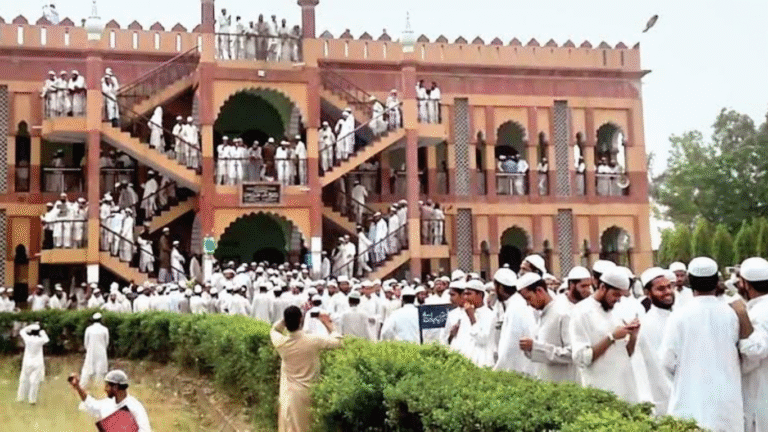
A Brief History of Kanpur Dehat
Kanpur Dehat, often called the “rural side of Kanpur,” has a history rooted in the legacy of ancient kingdoms and freedom movements. Earlier, this region was a part of the larger Kanpur district. In 1977, Kanpur was split into Kanpur Nagar and Kanpur Dehat for better governance. Since then, Kanpur Dehat has carved its identity as a district rich in tradition and cultural depth.
This region witnessed many historical events during the freedom struggle. Its villages and towns served as quiet but strong centers of resistance against British rule. People from this land contributed to the nation’s independence silently but with deep dedication.
Old forts, temples, and traditional structures still dot the landscape, reminding one of its historical richness. Though not heavily urbanized, Kanpur Dehat continues to reflect the legacy of rural India and its timeless values. This district balances its roots while slowly embracing development.
Geography and Climate of Kanpur Dehat
Located in the western part of Uttar Pradesh, Kanpur Dehat lies between the Ganga and Yamuna rivers. This gives the area fertile soil, perfect for farming. It is surrounded by Etawah, Auraiya, Fatehpur, and Kanpur Nagar. The district is mainly flat with a few low-lying areas that get waterlogged during the monsoon season.
The climate here is of the typical north Indian kind – hot summers, cold winters, and a rainy monsoon. From April to June, temperatures can cross 40°C, while December and January bring chilly winds with temperatures dropping below 10°C. The monsoon arrives in July, bringing relief to the dry land and helping crops grow.
Most of the district is covered with agricultural land. Small ponds, seasonal rivers, and canal networks provide irrigation to farmers. Though there are no major forests or mountains, the open fields and green villages offer a peaceful countryside view. The simplicity of nature here defines the soul of Kanpur Dehat.
Economic Backbone – Agriculture and Small Industries
Kanpur Dehat’s economy largely runs on agriculture. The fertile alluvial soil makes it suitable for crops like wheat, rice, pulses, and sugarcane. Many farmers here follow traditional farming techniques, though modern practices are slowly making their way in. The district also sees good potato and mustard production.
Apart from farming, small-scale industries are growing. Cottage industries like pottery, handloom weaving, brick kilns, and agro-based units are common. Some areas also have food processing units that produce jaggery, pickles, and spices.
Weekly village markets play a vital role in trade. Farmers sell fresh vegetables, grains, and dairy products directly to locals. With good road connectivity to Kanpur city, many people from Kanpur Dehat go there for work or trade, bringing back income and ideas.
Government efforts are being made to boost rural industries and encourage youth to take up entrepreneurship. Schemes for self-help groups and rural employment are also helping the local economy slowly evolve.
Political Structure and Representation
Kanpur Dehat is divided into several tehsils like Akbarpur, Bhognipur, and Rasulabad. It falls under the Kanpur division and has both Lok Sabha and Vidhan Sabha constituencies. The district is governed by a District Magistrate and a Zila Panchayat, which take care of administration and rural development.
The local political environment is active. Villagers participate in panchayat elections with great interest. Grassroots democracy is strong here. Major political parties like the BJP, SP, BSP, and Congress have their presence and influence in the area.
People often vote based on local issues – roads, electricity, water supply, and jobs. With changing times, youth participation in politics is also increasing. Social media and awareness campaigns are making villagers more informed voters.
While national politics plays a role, it is the local leaders and their promises that decide the political mood in Kanpur Dehat. Efforts are also being made to involve women and youth in leadership roles at the panchayat level.
Demography and Culture
As per the latest estimates, Kanpur Dehat has a population of over 18 lakhs. The majority of the people live in villages. The literacy rate is improving, with many children now attending government and private schools. Hindi is the main language, but local dialects like Awadhi and Bundeli are also spoken.
The population includes Hindus, Muslims, and people from other communities living together in harmony. Agriculture is the main occupation, but many also work in small businesses or government jobs. Young people often migrate to Kanpur city or other towns for better opportunities.
Festivals like Diwali, Holi, Eid, and Teej are celebrated with great joy. Traditional folk music, dance, and fairs are still a part of rural life. Despite the modern influences, people hold on to their customs and cultural roots proudly.
Families are closely knit, and social values run deep in daily life. From helping neighbors in times of need to participating in community functions, the spirit of unity defines the life in Kanpur Dehat.
Conclusion
Kanpur Dehat is more than just a rural district. It is a land of traditions, hardworking people, and a strong connection to India’s soil. While it may not have the hustle of big cities, its calm villages, fertile fields, and cultural richness make it a special place in Uttar Pradesh. With slow but steady progress, Kanpur Dehat is walking toward a better future while keeping its soul intact.



